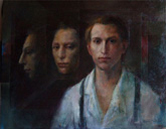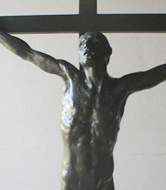you do not see the bitter landscapes, if there are snowy vistas there is vibrance and never a reflection upon the drab. Look to this Joseph Smith first vision portrayal, where is the snow? It's an upstate New York that does NOT exist in early Spring:
Yes! lol. I hadn't thought about the weather in viewing any of the stuff so far. I wouldn't have known that about spring in NY, but Russia doesn't have a reputation for year around sunshine.
I asked about Barsch and whether he is accepted by the LDS Church as "LDS art" and whether his contributions are appreciated. If any art that steps outside the halos, and utopia of LDS art is appreciated then I don't draw the parallels so easily.
You did? I went back to your posts and I didn't see the question about Barsch. I don't know if he's on the Church's radar or anything like that. I think I also asked in my post if anyone knows of his work being in church buildings. Given he's promoted by faithful LDS intellectuals, such as the Encyclopedia of Mormonism piece.
If the Church does not specifically restrict LDS artists then there is something else (the indoctrination) that is creating the waves upon waves of hero worship art, ancestor worship that is being created. Gad, one of your quotes of Kimballs had him stating that the art should revolve about spirituality and the Church -- yet apparently you're saying now that artistic creativity is not confined by Church dictates.
Let me explain, yes, the church has said those things and Kimball in particular. Further, as the prophets have said, the Ensign is right up there with the standard works, so whatever it portrays, the Saints are going to take notice of. It isn't explicitly dictated as it was in the Soviet Union. Had Utah remained independent, who knows what would have happened, but the church can't exactly throw people in prison and needs to be judicious in its excommunications. Also, the church to my knowledge, hasn't embarked on any kind of a "high culture" campaign despite what would be Kimball's desire to do so. In fact, it would appear by Kimball's own statements that despite the clear reference to one-upping the Western Canon, that he kind of just expected it would happen on its own. I don't think he likely realized a lot of the practical difficulties in acheiving it, issues of economy like funding, and so on. The two things I mean to be clear on is a) the clear art-style links to socialist realism b) The clear view of art as ideology and politics to glorify the foundations of the state in Kimball's view. How everything else plays out is what makes it an interesting topic to pursue.
Or, am I missing out on the fact that the LDS Church commissions certain artists to create art for the Church? I suppose these posts/threads have piqued my interest and I'll have to do my own research as much of these posts appear contradictory to me.
It most certainly has. Just note in my little world, commissioning art, having fantasies of high culture, heavily funding a movement to develop high culture, heavily funding a pop-culture ad campaign, are all things that might relate to each other in various ways but are themselves different things.



